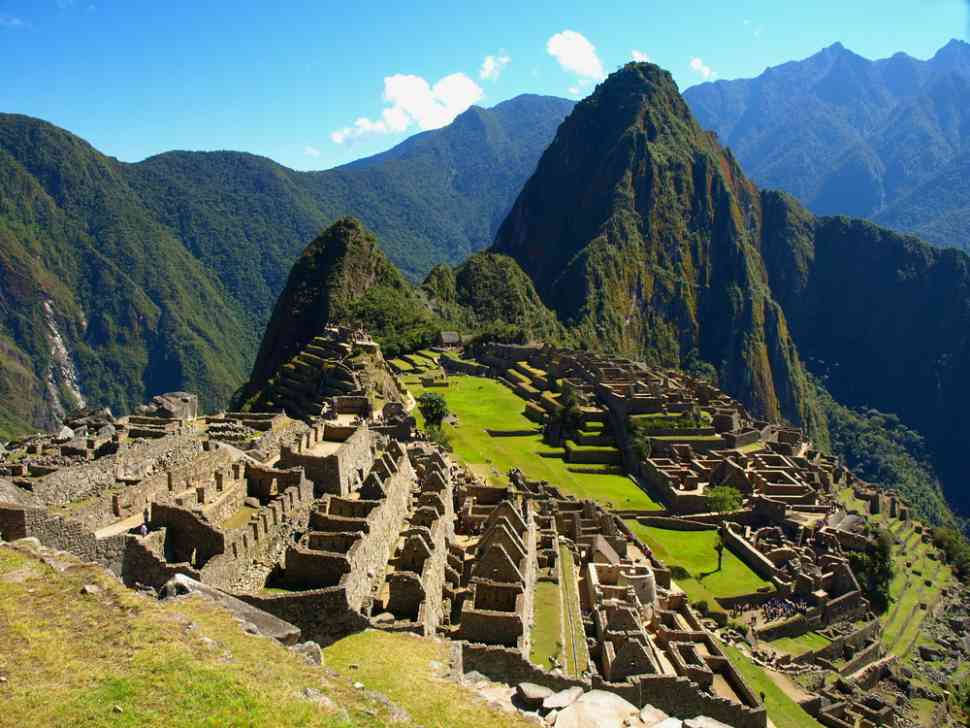Ancient Civilizations Of Latin America

Machu Picchu in Peru-lost city of the Incas
Latin America is an interesting place in the world. The civilizations that existed before the arrival of the Spanish and English people were unique. Today I will give you a tour of some of the wonderful cultures and a mental trip to their philosophy.
- The Olmecs
The beginning of this civilization is lost in time but reaches at least up to 3000 BC. The Olmecs created hieroglyphic writing, numerical symbols, and a calendar. They also built cities and ritual centers. At least ten gods are mentioned, some of which also existed until the Aztec period, two thousand years later. In the area of the so-called, ”three sapotes” archeologists found the famous column C, which gives us a clue about their advanced writing system. Based on the findings, we understand they had an extraordinary mathematical conception, and they were the first people on the planet to conceive and make use of zero, many centuries before it was used in Europe. This abstract concept (of zero), so common for us today, then allowed the Maya to build one of the best numerical systems of all time. The Olmecs are considered the mother culture of Middle America. - The Teotihuacan culture
The word Teotihuacan means “the place in which people became gods,” and its evolution was a continuation of the Olmec culture. Teotihuacan is famous for its wide avenues, for its famous pyramids of The Sun and Moon, for the sophistication of the frescoes that adorned the walls of its luxurious palaces. The Shape of the central city was square, with a clear north-south orientation and a deviation of 15 degrees east, indicating accurate astronomical calculations. The city was treated as a feminine principle, embracing all that was within its limits. Through the number four, it was believed that the balance of the four elements, which represented the cardinal points, was achieved, a key axis of Indian mythology. Teotihuacan’s influence was significant in the Mayan evolutionary path. - The culture of the Zapotecs and Mixtecs
It was developed from 400 BC-750 AC. It was based in the high valleys of the state of Oaxaca in Mexico. Its main characteristic was that of the great development of astronomical knowledge. - The Totonac culture
They were deployed in the Bay Area in Veracruz. The capital El Tajin had an architectural wealth comparable to the largest Mayan centers. On the incomplete Pyramid of El Tajin, we found interesting stuff. There were found 365 cavities corresponding to the days of the year. - The Mayan civilization
From 20 AC to 900 AC, the Maya reached spiritual and artistic levels that, at that time, no other civilization in the so-called “New World” could reach, while few in the “Old World” could compete. The classical period was their “golden age.” Large populations, a booming economy, and extensive trade were some of the features. This was the only period when the Maya used in their monuments the calendar of a long numerical system. - The Toltecs
The Toltec civilization is from 856 AC to 1250 AC. This culture initially followed the same path as that of the Maya as their population entered the Maya region. They had writing and knowledge of mathematics and astronomy while using an accurate calendar. Have you ever heard of Chintsen Itsa? This was their capital city. Maya and Toltecs shared similar styles in architecture and religion. Human sacrifices on a wide scale were an influence of the Toltecs. Thus the Chintsen Itsa is known not only for its architecture but also for its sacrifices. They believed that the sacrificers there were in a kind of ecstasy and could seek the hearing of the gods and return as new rulers of the city. The Toltecs, according to existing indications, disappeared about 1224 m. X and their powerful Capital Chinchen Itsa was abandoned. - The Aztecs
This is the most recent Middle-American civilization (1325-1520 AC) with basic features identical to those of all the aforementioned cultures. Around 1428, they imposed on all their opponents, and their empire lasted until 1520. They developed astronomy even more. At the end of the 18th century, the famous stone of the sun was discovered; the Aztec calendar, a commemorative stone of a sacred date that according to them was taking place every 52 years.
Bring the best of the CEOWORLD magazine's global journalism to audiences in the United States and around the world. - Add CEOWORLD magazine to your Google News feed.
Follow CEOWORLD magazine headlines on: Google News, LinkedIn, Twitter, and Facebook.
Copyright 2025 The CEOWORLD magazine. All rights reserved. This material (and any extract from it) must not be copied, redistributed or placed on any website, without CEOWORLD magazine' prior written consent. For media queries, please contact: info@ceoworld.biz








